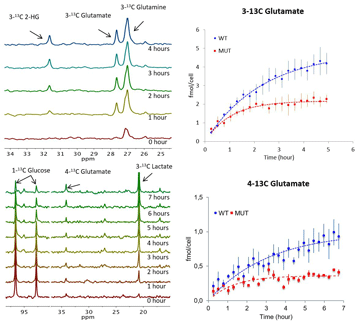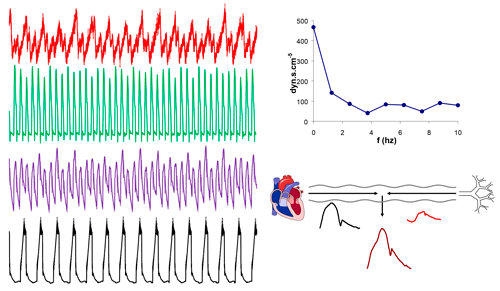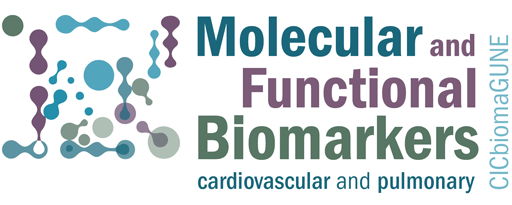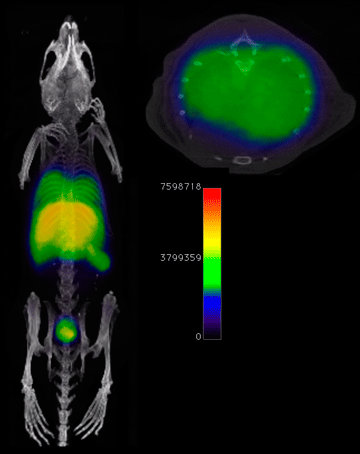Molecular and functional imaging
We are developing new nanoparticles for molecular imaging applications. The group is particularly interested in the potential of these imaging techniques in early diagnosis and molecular characterization of pulmonary vascular remodelling. In our research we seek the application of imaging techniques to describe in detail the efficiency of the pulmonary vascular system to transmit the flow and pressure generated by the heart. This macro-hemodynamic description will be related to an analysis of the final result and aim of the pulmonary circulation, i.e. the pulmonary perfusion. Likewise, we seek to relate this functional evaluation with other imaging tools that allow evaluating the possible vascular damage by studying inflammation and structural local alterations of the pulmonary endothelium.
Systems biology

Fluxomics by NMR spectroscopy
We are currently investigating the identification new (early) imaging and systems biology derived biomarkers useful for the diagnosis and monitoring of new treatments of pulmonary vascular diseases such as Pulmonary Hypertension. In common with functional imaging characterisation, profiling of metabolomic, transcriptomic and proteomic alterations of implied cells and affected tissues will reveal new pathogenic mechanisms associated with these diseases. The group is particularly interested in the assessment of metabolic changes associated with cell growth, the structure and function of the right ventricle and cardiovascular coupling biomarkers and signals.
Signals biology

Physiological signal recording and data analysis

